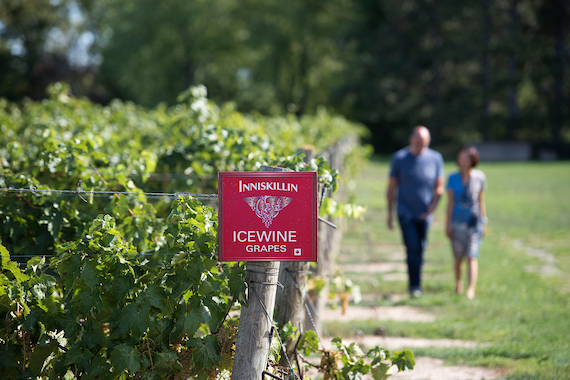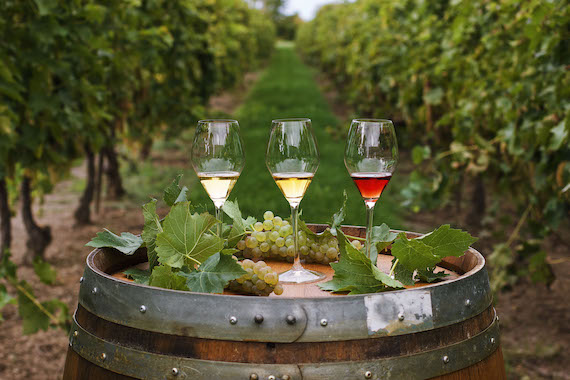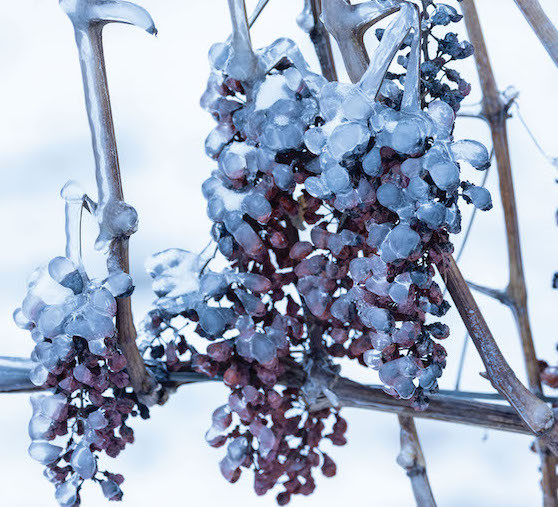The 2019/2020 European winter was a scorcher. In fact, according to the Copernicus Climate Change Service, it was the single warmest European winter since records began in 1850 and 3.4°C above the 1981-2020 norm.
This spelled trouble for Germany’s few remaining eiswein producers and, for the first time in history, the 2019 eiswein harvest failed nationwide as temperatures simply refused to drop to the requisite -7°C (19.4°F) needed to freeze the grapes on the vine.
In a statement given on 1 March 2020, Ernst Büscher, a spokesperson for the German Wine Institute, gave the world an ominous warning.
“If warm winters become more frequent over the coming years,” he said, “icewines from Germany’s regions will soon become an even more expensive rarity than they already are.”
“It’s a vanishing category,” says Sebastian Thomas, director and buyer for London-based fine wine supplier Howard Ripley. “Back in the 1990s we used to get gallons of the stuff and sell it off very cheaply but the days of the freely available eiswein I fear are gone.
“With climate change, opportunities to make eiswein are becoming rarer. There is a large amount of risk involved in making it. It’s not just leaving the grapes on the vines it’s also preparing the vineyards.
“A lot of growers wrap their grapes in foil to protect them from birds and boar and that costs a lot of money and is very labour intensive. And, while there are some growers like Dönnhoff, which specialise in eiswein and try to make one every year, it is a risk leaving your grapes out in the hope they’re going to freeze.”
The challenge for producers lies in the delicately balanced conditions that are required to produce icewines.
“Both botrytised wines and icewines are methods of gaining sweetness by concentrating the must,” explains Thomas. “In botrytised wine, it comes from evaporation because the botrytis will attack the grape skin and the grapes will shrivel. With icewine, there shouldn’t be any botrytis, or very little, and the concentration is achieved by freezing, and because sugar has a higher freezing point than water, the ice stays in the press and the sticky juice will run through.”
The highwire act requires a spring warm enough that frost doesn’t arrive too early, and a winter that gets cold enough to freeze the grapes.
“As the grapes hang throughout the fall they freeze and thaw repeatedly as winter approaches,” says Jeff Letvenuk, marketing manager at the Ontariobased Pillitteri Estates Winery.
“The freezing and thawing changes the character of the fruit giving it that honey, apricot-like taste. Then finally the atmosphere will drop below -8°C and we pick the grapes.
“This juice is intensely flavourful and high in sugars. The volume of juice from the pressing is about a 10th of what you would get from a regular fall harvest of the same grape, so the yields are much smaller.”

DISASTROUS HARVEST
The 2020 harvest was an improvement on 2019. The thermometer dipped below -7°C a total of four times between November and February, giving producers four opportunities to harvest, but then 2021 proved to be less kind.
“The 2021 harvest was a disaster,” says Thomas. “Our allocation of Dönnhoff was six half-bottles this year. He only made 200 or 300 litres in total, which for the whole world is microscopic.”
With the risk so high, it does beg the question of what all the fuss is about. “Some people go mad for the stuff,” says Thomas. “Eiswein should be clean, fresh and crisp with high, piercing acidity. The profile should be honey and citrus, it should be like when you were a child and you put a nine-volt battery on your tongue. A real surge of acidity. There are producers now who are making eisweins that are meltingly elegant, but some can be quite brutal.”
For lovers of German eiswein, it’s all about that light and clean character with intense fresh fruit acid that cuts through the residual sugar that is so special about these increasingly rare wines.
Climate change poses a huge threat to the German eiswein industry, and the risk of failed harvests will make even the most diehard growers reticent to allocate vines for its production.
Vines are beginning to be planted further north in Norway but, at present, harsh springs make viniculture impossible there. No wonder then that the world’s largest producer of icewine by some distance is a country where the summer and spring heat and winter cold are a bit more predictable.
Canada produces more icewine than all other producing countries combined. The country’s most productive region, Ontario, produced 800,000 litres in 2016, according to Wine Country Ontario.
“Our climate, in particular our hot, humid summers and freezing cold winters, allows us to produce wonderful vintages year after year while still ensuring that there is going to be a deep freeze and a viable icewine harvest every year,” says Letvenuk.
“Since our winery began producing icewine there has not been a winter where it did not get cold enough to harvest. It is this consistency that has allowed us to perfect the wine from both a stylistic and vineyard operations approach.”

STYLISTIC DIFFERENCES
It’s important to note that, despite the name, German eiswein and Canadian icewine can be stylistically very different.
Both share the same principle of putting frozen grapes into a press, but where German eiswein tends to come in around 7% or 8% abv, Canadian icewines tend to clock in between 9% and 13% abv and with more sweetness and less intense acidity.
But even in the Great White North, climate change is being felt. In Ontario, the province’s wine regulator, VQA Ontario reported that in 2020, about 1,000 tonnes of grapes were registered for icewines, down from nearly 6,000 the year prior.
It was a record low for the region in the 20 years that VQA Ontario has regulated the icewine harvest.
“Each region has its own challenges,” says Randy Dufour, vice president and head of international for Arterra Wines Canada, owner of Inniskillin and Jackson-Triggs.
“In Germany and Austria, they may not get the cold temperatures to make eiswein consistently. We rely on the whims of Mother Nature to provide healthy, fully ripened grapes in the summer, a moderately dry and cool fall, and then the sub-zero, but not too cold, temperatures in the winter to make our icewines.
“Spring frosts would be detrimental to any wine regions and as the climate change takes place and we see earlier budbreak, spring frosts are a concern. Also, heavy rain or wet conditions in the fall will cause rot issues.” It’s these early stages of the growing season where Canadian producers are most vulnerable.
“The most dangerous time for us is frost in the spring,” says Letvenuk. “We do sometimes get a late spring frost around budbreak and that can be damaging to the crop yields for the season. “We mitigate this risk using wind machines in our vineyards to invert the warmer air and keep constant air movement around new bud growth on those cooler spring nights.
“We do worry about climate change, but we have adapted to extreme weather events. With modern harvesters and wind machine technology we can harvest even in the most severe winter storm conditions and manage our vine health through cold winters.”
Canadian icewine has achieved global plaudits. The region has won fans and inspired many across the globe and the country’s largest importer, China, has also recently taken to production. Since the mid2010s production around the city of Ji’an in the north eastern Jilin province has been growing and the city now accounts for a sixth of global icewine production.
As winter grows increasingly fickle, some producers in Canada and the US have chosen to take the risk out of it, picking grapes at peak ripeness and artificially freezing them. These wines cannot legally be called icewine and instead carry names such as icebox wine, iced wines or vin de glacière.
With China and Canada, the style has consistency and security although there is a nagging sense of sadness that eiswein is becoming increasingly scarce in the country that originated it. But, with no assurances that a grape left on the vine will freeze, it would be nonsensical for a grower to reserve thousands of vines on a punt.
“We all have to make a living,” says Thomas. “I’m sure it won’t disappear completely, but it will get rarer. I may be wrong and we may lose it, but I think there will always be producers willing to take the risk.”




